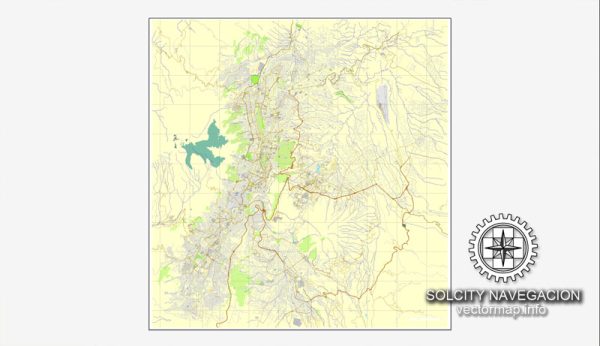Quito, the capital city of Ecuador, is renowned for its rich and diverse architectural heritage, reflecting its long history and cultural influences. Here’s a brief description of the architecture in Quito, Ecuador:
- Colonial Architecture: Quito’s historic center, also known as “Old Town” (Centro Histórico), is a UNESCO World Heritage Site and showcases an exceptional collection of colonial architecture. The city’s colonial history is evident in the well-preserved buildings, plazas, and streets. Key features of colonial architecture in Quito include:
- Spanish Baroque influence with ornate facades and intricate details.
- Whitewashed buildings with colorful balconies and wooden shutters.
- Courtyards, often hidden behind massive wooden doors.
- Churches and cathedrals, such as the iconic La Compañía and San Francisco, with their intricate interiors and gilded altars.
- Baroque Architecture: The Baroque style is prominent in Quito’s churches and religious buildings. Elaborate decorations, gilded altars, and intricate sculptures are hallmarks of Baroque architecture in the city. La Compañía Church, often considered a masterpiece of Baroque architecture, is a prime example of this style.
- Neoclassical Architecture: During the 19th century, Quito saw the emergence of Neoclassical architecture. This style is characterized by simple and symmetrical designs, columns, and pediments. Some government buildings and palaces in the city reflect Neoclassical influences.
- Republican Architecture: The 19th-century republican period in Ecuador brought about various architectural styles, including Neoclassical, Gothic, and Art Nouveau. These styles can be seen in grand residences and public buildings.
- Modern and Contemporary Architecture: In the 20th and 21st centuries, Quito has embraced modern and contemporary architectural trends. High-rise buildings and modern urban planning are visible in the city’s expansion. Notable contemporary examples include the Quito Metro stations, which blend functionality and aesthetics.
- The TelefériQo Complex: The TelefériQo is a popular attraction in Quito that provides visitors with a breathtaking view of the city and the surrounding Andes mountains. The architecture of the complex is modern and includes a cable car station, restaurants, and recreational areas.
- Sustainable and Indigenous Influences: Quito places a strong emphasis on sustainability and the preservation of its natural surroundings. In some modern developments, architects have incorporated eco-friendly designs and materials. Additionally, indigenous influences can be seen in certain buildings, reflecting the rich cultural heritage of the region.
- Preservation Efforts: Preservation efforts have been essential in maintaining the historical integrity of the city. Many of the colonial buildings and architectural landmarks have been meticulously restored, allowing residents and visitors to appreciate Quito’s architectural history.
Overall, Quito’s architecture is a unique blend of historical, colonial, and contemporary styles, providing a captivating visual journey through the city’s past and present. The city’s commitment to preserving its architectural heritage while embracing modern developments makes it a fascinating place for architecture enthusiasts to explore.


 Author: Kirill Shrayber, Ph.D.
Author: Kirill Shrayber, Ph.D.